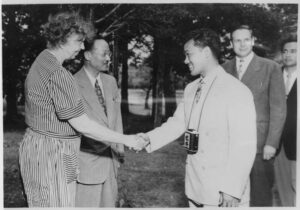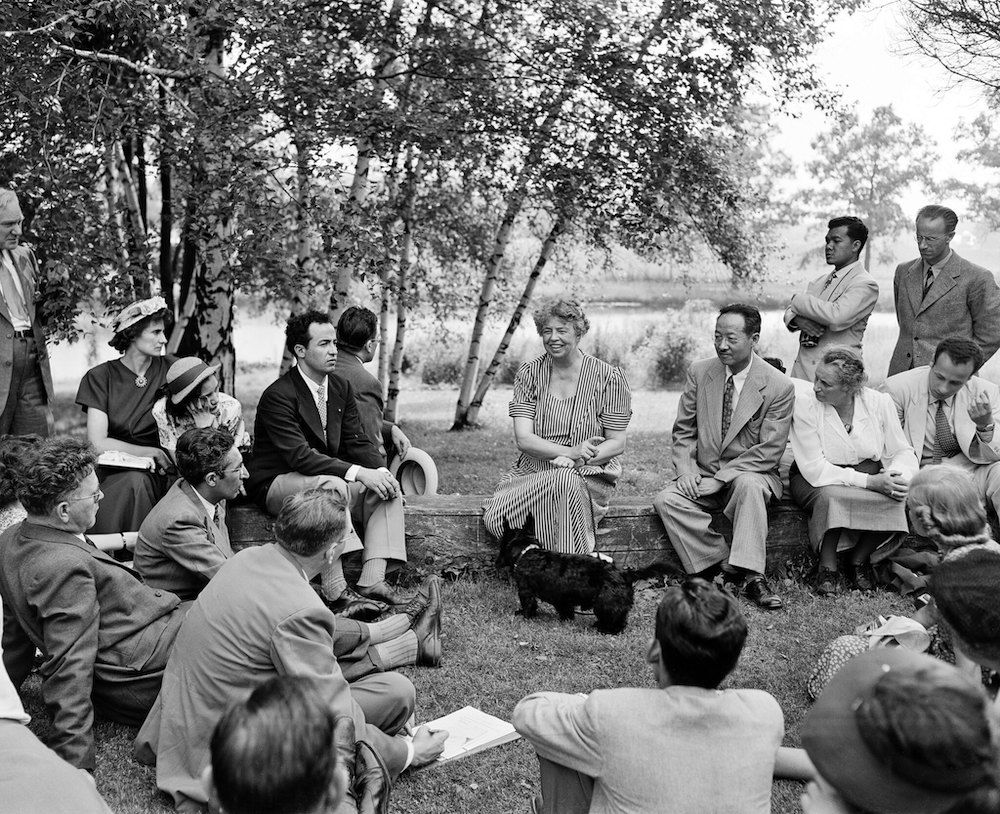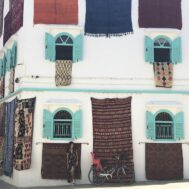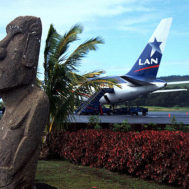UNESCO has released proposed Draft Model Provisions “modifying” the 1970 UNESCO Convention.[1] The changes are major; they resemble the harsh provisions of the 1995 UNIDROIT Convention – which have been rejected by most Western and collecting nations. UNESCO announced that it is closing comments to the Model Provisions on November 11. Comments may be sent to [email protected].
Observers today tend to forget that when the United States signed the 1970 UNESCO Convention, it did so only with written reservations. Congress had serious concerns about applying blanket foreign laws nationalizing cultural property to U.S. citizens and public museums. When Congress implemented the UNESCO Convention into U.S. law in 1983, through the Convention on Cultural Property Implementation Act (CPIA), it required foreign nations applying for U.S. assistance to show that their cultural heritage was actually under threat, that there was serious pillage, and that they were also taking self-help measures under the 1970 UNESCO Convention, not simply relying on the U.S. to be the world’s policeman.[2] Congress also insisted that U.S. import restrictions would be “consistent with the general interest of the international community in the interchange of cultural property among nations for scientific, cultural, and educational purposes.”
Other nations have had concerns about the scope and definitions of the 1970 UNESCO Convention. The UK signed it only in 2002 and has issued guidance to its citizens on how to interpret its terms. Germany and the Netherlands each have their own perspectives or definitions of what constitutes cultural property under the 1970 Convention, for example, by limiting key provisions to objects that truly express the identity of a nation.

Mrs. Eleanor Roosevelt, Chairman of the United Nations Human Rights Commission, entertains UNESCO visitors on the grounds of her home in Hyde Park, NY, July 01, 1948. Credit UN Photo/KB
In contrast, UNESCO’s 2022 proposed Model Provisions would apply severe restrictions to trade in an exceptionally broad range of objects, from national treasures to objects duplicated in the millions. They cover ethnological art and items mass produced for commerce as well as antiquities. All the proposed changes are geared to expanding the reach of foreign state governments’ control over European, UK, and US ownership of art and cultural property, whether it belongs to private citizens, museums or is circulating in the art trade.
The Model Provisions clearly endorse state ownership of all cultural objects, including private and religious property – they would, for example, grant recognition of Middle Eastern and North African nations’ seizures of Jewish patrimony, Turkey and Azerbaijan’s control over Greek Orthodox and Armenian Christian heritage, and China’s claims for absolute control of all minority Tibetan and Uyghur heritage. The human and religious rights of religious and ethnic minorities in particular would be impacted by policies excessively restricting ownership of cultural heritage to governments that in many cases abuse minority communities or have forced them to leave the country without their possessions.
The Model Provisions are so broad that they will apply to objects regardless of their importance to national identity or lack of it. They call for extra-territorial enforcement of foreign nationalizing laws and return of objects to countries where they were created thousands of years before, without requiring evidence that they were illicitly acquired. In addition, they mandate government licensing and supervision of all businesses and persons trading in cultural property and set provenance requirements as proof of lawful export. For the vast majority of objects, such proof is literally impossible to obtain, since very few countries have ever followed the direction of the original 1970 Convention to establish export permitting systems and records no longer exist for the majority of ethnographic and ancient objects that have circulated internationally for decades if not centuries.
If the Model Provisions are implemented into the national laws of countries where much art now circulates freely, as it does in the EU, the UK and in the United States, most of the international trade in ancient and ethnographic art would end.

Leading figures in the “non-aligned” nations whose perspective informed much of the 1970 UNESCO Convention: Nehru, Nkrumah, Nasser, Sukarno and Tito.
UNESCO’s failure to solicit or attend to public comment from key stakeholders is alarming. The UNESCO committee of ‘experts’ that has created the proposed Model Provisions has no representation from important art collecting countries, nor anyone from the art market.
Unfortunately, the “public comment” process being followed shows UNESCO’s reluctance to listen to the public. On October 4, 2022, comments on what is already a near-complete document were solicited from a few trade sources but UNESCO did not consult with museums (except ICOM) or others impacted by adoption of the Model Provisions.
In fact, when they were issued, the Model Provisions were not even sent to CINOA, the largest umbrella art trade organization in the world. CINOA found out about the Model Provisions from another source just a few weeks prior to the deadline for comments.
This is typical of how UNESCO operates. It has kept the art trade and museums in the dark until the last minute, when the proposals are already set in stone, and now will seek commitments from its member states to ratify it without consideration of the problems it will create.
Art trade and media specialist Ivan Macquisten told Cultural Property News:
“I find this exercise entirely cynical. Far from strengthening the UNESCO Convention, it significantly undermines it – to my mind it does so to such an extent that States Parties who have signed up to the Convention would have right to cede from it if these measures were pushed through.”
“While developments in recent years mean that cultural property has become much more politicised and vulnerable, exploiting that vulnerability to this ideological extent is not only undemocratic, it constitutes a very significant attack on human rights. A classic case of the cure being worse than the disease. In this case, their medicine for ‘treating’ the art market would simply kill it off.”
US Congress Implemented the 1970 Convention with Reservations to Retain US Independent Judgement, Not Apply Foreign Law

Senator Daniel Patrick Moynihan, who together with Senator Bob Dole, were the architects of the 1983 Cultural Property Implementation Act, U.S. Congress photo.
In a law review article in 1982, author Jeffrey L. Shanaberger describes the ratification of the Convention by Congress providing its advice and consent on August 11, 1972, emphasizing the independent judgment and specific interpretations Congress adopted.
“The ratification was qualified, however, by six express understandings and a reservation.
“Clearly the most critical of the understandings was that the Convention was not to be self-executing or retroactive. As a result, the Convention was without force in the United States until Congress enacted the necessary implementing legislation.”[3]
As stated in the Congressional Record:[4]
- The United States reserved the right to determine whether or not to impose export controls over cultural property.
- The United States understands the provisions of the Convention to be neither self-executing nor retroactive.
- The United States understands Article 3not to modify property interest in cultural property under the laws of the states parties.
- The United States understands Article 7(a) to apply to institutions whose acquisition policy is subject to national control under existing domestic legislationand not to require the enactment of new legislation to establish national control over other institutions.
- The United States understands that Article 7(b)is without prejudice to other remedies, civil or penal, available under the laws of the states parties for the recovery of stolen cultural property to the rightful owner without payment or compensation. The United States is further prepared to take additional steps contemplated by Article 7(b)(ii) for the return of covered stolen cultural property without payment or compensation, except to the extent required by the Constitution of the United States, for those states parties that agree to do the same for the United States institutions.
- The United States understands the words “as appropriate for each country” in Article 10(a) as permitting each state party to determine the extent of regulation, if any, of antique dealers and declares that in the United States that determination would be made by the appropriate authorities of state and municipal governments.
- The United States understands Article 13(d) as applying to objects removed from the country of origin after the entry into force of this Convention, for the states concerned and, as stated by the Chairman of the Special Committee of Governmental Exports that prepared the text, and reported in paragraph 23of the Report of that Committee, the means of recovery of cultural property under subparagraph (d) are the judicial actions referred to in subparagraph (c) of Article 13, and that such actions are controlled by the law of the requested State, the requesting State having to submit necessary proofs.

Senator Bob Dole, who worked with Moynihan to pass the CPIA .
The proposed Model Provisions issued by UNESCO in October, and set forth below, are clearly antithetical to the independent judgment so crucial to the United States and contradict the specific reservations made by Congress to the original 1970 Convention.
The 2022 Model Provisions & Commentary
The 2022 Model Provisions below (in italics) are followed by comments by Peter K. Tompa of the Committee for Cultural Policy’s sister organization, Global Heritage Alliance:
- Chapter 1, Provision 1
- (General Duty)
The State shall ensure the protection of cultural property in order to preserve cultural property for the present and future generations. It shall cooperate with other States and international organizations to prevent looting and illicit trafficking of cultural property and to promote the restitution of stolen cultural property and the return of illicitly exported cultural property.
Comment: This provision reiterates the 1970 UNESCO Convention’s erroneous assumption that the State is always the best steward for the protection of cultural heritage. This assumption is demonstrably false for “failed states” or those who are expected to “protect” the cultural heritage of repressed or displaced ethnic and religious minority populations. This assumption is also false for cultural goods that that exist in multiples or are of low monetary value. States often lack the resources to care for national treasures let alone thousands upon thousands of common items like historical coins.
- Provision 2
- (Notion of cultural property)
The term ‘cultural property’ means property with significance for archaeology, prehistory, history, literature, art or science and which forms part of the cultural heritage of a State.
Comment: This provision is grossly overbroad and so subjective as to potentially include anything a State Party desires, including items not typically considered “cultural property” as well as items held privately or in the trade. As stated in UNESCO’s commentary,
It should be noted that references to archaeology, prehistory, history, literature, art or science, to define the notion of cultural property are not limitative. Depending on the cultural interests that States endeavor to defend or promote, other values or references to cultural significance can be added, such as paleontology.
In addition to property in public collections, the term cultural property also refers to cultural property in private hands or in circulation in the art market.
We understand that the term “cultural property” found in the UNESCO Convention is broad but believe additional regulations should only apply to items of cultural importance which form a significant part of the cultural heritage of a state. These should not include cultural goods produced in many multiples, particularly those of low economic value, especially when similar or identical cultural goods are found in quantity elsewhere.
- Provision 3
- (Notion of public collection)
Public collections consist of cultural property belonging to the State, a local or regional authority, a religious institution or an institution recognized as serving the public interest and established for cultural, educational or scientific purposes.
- Provision 4
- (Notion of Indigenous cultural heritage)
The cultural heritage of Indigenous communities includes property of cultural or spiritual interest to these communities. These objects are the expression of the customs and traditional, ritual or funerary uses of these communities.
Comment: Such artifacts should be under the control of the communities themselves, not nation states, which may or may not act in their best interests.
- Provision 5
- (Notions of State of origin and State of provenance)
The State of origin of a cultural property refers to the national territory from which a cultural property was extracted, excavated, discovered or created. The State of origin has a cultural, historical or archaeological link to the cultural property.
The State of provenance of a cultural property is the State from which a cultural property was transferred, including in an irregular manner, either by misappropriation constituting theft or by illicit export in violation of national legislation on the movement of cultural property.
Comment: The “State of origin” does not account for situations where modern borders do not comport with ancient ones, or where the point of extraction, excavation, discovery or creation is unknown. Moreover, the place of creation of cultural goods should not be a default, where such materials were items of commerce.
- Chapter 2, National services and inventory
- Provision 6
- (Competent authorities)
The competent authorities are the public authorities that ensure the protection of cultural heritage. They are responsible for the prevention and, subject to the jurisdiction of the judicial authorities, the repression of illicit imports, exports and transfers of ownership of cultural property.
They exercise control over archaeological excavations and the conservation of archaeological sites and deposits. They ensure the development of scientific and technical institutions related to the conservation and research on cultural heritage, as well as research on the provenance of cultural property in public collections in collaboration with public institutions, including those depositaries of public collections; they monitor the art market and collect relevant data on illicit trafficking; they are involved in public information and awareness raising on the respect of cultural heritage and the fight against illicit trafficking of cultural property.
They ensure the establishment and updating of the national inventory of cultural property. They are responsible for examining and issuing export and import certificates. The same applies to licences to carry out a professional activity directly or indirectly related to the art market.
Comment: The problem is that the competent authorities all too often act without any meaningful input from those they regulate.
- Provision 7
- (Inventory)
A national inventory of cultural property is established. This inventory can include all the inventories of public collections kept in museums or in any other cultural or scientific institution, and the inventories of cultural property of importance for archaeology, prehistory, history, literature, art or science and which are part of the cultural heritage of the State.
The inventory also refers to important public and private cultural property whose export would constitute an appreciable impoverishment of the national cultural heritage.
The national inventory of cultural property is under the responsibility of the competent authorities which ensure its regular updating.
Comment: The commentary states, “The establishment of a national inventory of cultural property is a cardinal obligation on the State in the establishment of their policy for the prevention and combat of illicit trafficking of cultural property.” However, there are no sanctions for nation states that do not meet this obligation, and most don’t anyway due to the costs and time required.
- Chapter 3 – Movement of cultural property
- Provision 8
- (Movement)
Cultural property, unless otherwise provided under the second paragraph, shall not be exported from the national territory without an export certificate.
The export of public collections, of cultural property that is of national interest, as well as items of the heritage and human remains of indigenous communities is prohibited. Exemptions to this export prohibition may be granted in particular for temporary exports for the purposes of exhibition, loan or deposit in a cultural institution, restoration or exceptional scientific analysis.
The prohibition of export does not apply in case of export for return and restitution of cultural property as well as items of the heritage and human remains of indigenous communities, based in particular on the 1970 UNESCO Convention on the Means of Prohibiting and Preventing the Illicit Import, Export and Transfer of Ownership of Cultural Property or on the 1995 UNIDROIT Convention on Stolen or Illegally Exported Cultural Objects.
Comment: Many countries (including the US) do not issue export permits but allow cultural goods within their jurisdiction to be exported. Others do not require export permits for common items like historical coins. Still other countries, technically issue export permits, but they cannot keep up with demand for such export permits so there are extensive attendant delays. Still others, do not issue export permits at all, even though the 1970 UNESCO Convention assumes such permits will be issued. Generally speaking, the broader the definition of cultural property, the less likely such a requirement will or can be fulfilled.
- Provision 9
- (Export certificate)
An export certificate accompanies all cultural property authorized to leave the territory. This permission to leave the territory is issued by the competent authority and is expressly mentioned on the certificate.
The export certificate includes a detailed description of the cultural property, its provenance, the identity of the owner and the reasons for the export.
A temporary permission to leave the territory may be issued for cultural property for which export is prohibited in accordance with § 2 of Provision 8 for the sole purpose of exhibition, loan or deposit in a cultural institution, restoration or exceptional scientific analysis. The temporary permission specifies the date by which cultural property must be returned to the territory of the State that issued the permission to leave the territory.
Comment: See Comment to Provision 8 above.
- Provision 10
- (Policy on the acquisition of cultural property by museums and other public cultural institutions)
Museums and other public cultural or religious institutions shall not acquire or exhibit cultural property which:
- has been stolen or is the product of illicit excavation;
- has been illegally exported from the territory of the State of origin or provenance.
Museums and institutions to which such property is offered shall inform the competent authority without delay.
Comment: This provision seems to depart from the 1970 Rule by prohibiting museums from acquiring “stolen,” “illegally excavated” or “illegally exported” cultural property no matter when this allegedly happened. How is whether an item was “stolen,” “illegally excavated” or “illegally exported” to be determined? Is it relevant that the laws which were allegedly broken were not enforced at the time? Should statutes of limitations or laches be held to apply?
- Provision 11
- (Prevention of irremediable injury to the cultural heritage of another State)
The State may conclude an agreement with a State whose cultural patrimony is in jeopardy from pillage of archaeological or ethnological materials, with a view to provide for and implement all measures to prevent irremediable injury to its cultural heritage. These measures shall include administrative and judicial cooperation, exchange of information and import prohibitions.
Comment: This provision seems to depart from the decision of the United States to exercise its independent judgment as to whether and to wat extent to impose import restrictions on behalf of another country. This “independent judgment” requirement is embedded into the Convention on Cultural Property Implementation Act, 19 U.S.C. Section 2601.
- Chapter 4 – Return and restitution of illegally imported/exported cultural property
- Provision 12
- (Return and restitution)
When the State of provenance provides evidence of the theft or illicit export of a cultural property, the restitution or return of cultural property to that State shall be granted as a matter of right, subject to the control of the judicial or administrative authority of the requested State.
The judicial or administrative authority shall, in its decision, apply the law of the State of origin or provenance on the control of the movement of cultural property and on the ownership of cultural property.
Where the State of origin provides evidence of the cultural, historical or archaeological link of the cultural property with its territory, the claim to the object shall be processed by the competent authority within the meaning of Provision 6.
The prohibition of export of public collections, cultural property that is of national interest, as well as items of the heritage and human remains of indigenous communities shall not apply in the case of the return or restitution of cultural property to the State of provenance or State of origin.
Comment: This provision requires states adjudicating claims to cultural property to apply foreign law even where it is inconsistent with the law of the jurisdiction. Such a rule is contrary to the “independent judgment” embedded in U.S. law in such matters as well as U.S. principles of due process.
- Provision 13
- (Occupation of a country by a foreign power)
In the case of an occupation of the territory of the State of provenance by a foreign power, the violation of the sovereignty of the State of provenance constitutes evidence of the theft or illicit export of cultural property, provided that such violation is recognised by a resolution of the Security Council based on Chapter VII of the United Nations Charter.
Cultural property removed from the occupied territory of the State of provenance by a foreign power in violation of the sovereignty of the State of provenance is presumed to have been stolen or illicitly exported.
No Comment.
- Provision 14
- (Good faith and obligation of due diligence)
In assessing the good faith of the possessor or acquirer of a cultural property claimed by the State of origin or provenance, consideration shall be given to the circumstances of the acquisition or entry into possession of the cultural property, the character of the parties and the price paid.
The possessor or acquirer must also prove that he has exercised due diligence by having, as appropriate in each case, consulted the documentation on the provenance of the object, checked the export certificate or the authorization to leave the territory of the State of origin and provenance, consulted any accessible register of stolen cultural property and sought any relevant information which he could reasonably have obtained, or took any other step which a reasonable person would have taken in the circumstances.
Comment: This provision places an unfair and unrealistic burden on a possessor or acquirer of cultural property in several respects. First, the provision places no burden whatsoever on a State Party in claiming an object as the “State of origin or provenance”. This simply encourages “fishing expeditions” for objects of interest.in the hopes that the possessor will not be able to show adequate “due diligence.”
The discussion of due diligence references duties that may be appropriate for high value art and antiquities. However, the vast majority of cultural goods are of insufficient value to merit an exercise of due diligence beyond purchase from what appears to be a legitimate source. It is also highly unrealistic to expect that objects circulating in the art market come with export certificates. Even when they were issued in the past, they either lack sufficient detail to prove that a specific item was associated with a particular permit, relate to multiple objects, which are insufficiently described, or they once, but no longer exist because they were discarded because they were no longer needed once the object reached its destination.
- Provision 15
- (Regulation of the art market)
Only private individuals or legal entities, holders of a license issued by the competent authority, can exercise a professional activity directly or indirectly related to the art market.
They establish the identity of the supplier and the seller and require from them a written declaration on their right to dispose of the cultural property.
They inform their clients of the import and export regulations in force in the States of provenance and acquisition.
They maintain a register recording all movements and transactions of cultural property, whether they are acting as seller or agent to the seller.
Comment: This provision is highly unrealistic. It envisions that only licensed businesses will sell art; however, most countries do not have the capacity or will to create the necessary bureaucracy for such an endeavor. There is an expectation for these individuals to hold legal degrees and be experts in foreign law when such laws are often unavailable or are not consistently applied in practice. They are also expected to maintain a register of movements or transactions, but such record keeping is of little use unless it is maintained in a database, which again would require a major undertaking.
- Provision 16
- (Duty of care of art market professionals)
Art market professionals may only authorise the transfer of a cultural object on the art market, at an auction or in an Internet sale (or online sale) if they can guaranty, in view of the circumstances, that the object:
- has not been stolen, illicitly excavated or illicitly exported;
- has not been illicitly imported.
Comment: It is unrealistic to assume that art market professionals can make such absolute guarantees. At most they may be able to warrant only that to the best of their knowledge items are not stolen, the direct products of illicit excavations, or were illicitly exported directly before receipt.
- Chapter 6 – Civil, criminal and administrative sanctions
- Provision 17
- (Criminal Offence)
Theft, illicit export and illicit import of cultural property, as well as the violation of the rules relating to the export certificate, are criminal offences.
The exercise of a professional activity directly or indirectly related to the art market, without the license authorizing this activity, constitutes a criminal offence.
Criminal sanctions are imposed without prejudice to compensation measures for the damages and losses suffered, at the expense of the perpetrator of the sanctioned acts.
Comment: The commentary to this provision notes, “The sanctions in the event of breaches of the obligations set out in the Model Provisions depend on the different national legal systems.” Any such criminal offenses must comport with the principles of due process.
- Provision 18
- (Administrative sanctions)
Any breach, by an individual or legal entity, of the provisions protecting cultural property and preventing the illicit trafficking of such property, established by decision of the judicial authority, entails an inability for this individual or legal entity to continue the professional activity at the origin of the imposed sanction.
Absence or incompleteness of the information provided in the register in which all the movements and transactions of cultural property are recorded entails the definitive withdrawal or the provisional suspension, by the competent authority, of the license authorizing the exercise of the professional activity directly or indirectly linked to the art market.
Comment: Any such administrative sanctions must comport with the principles of due process.
Note: Cultural Property News will continue to post updates and commentary on proposed changes to the 1970 UNESCO Convention.
[1] 1970 United Nations Educational, Scientific, and Cultural Organization (UNESCO) Convention on the Means of Prohibiting and Preventing the Illicit Import, Export and Transfer of Ownership of Cultural Property.
[2] Convention on Cultural Property Implementation Act, 19 U.S.C. §§ 2601 et seq., enacted as: “Title III of Public Law 97-446”, on January 12, 1983.
[3] Jeffrey L. Shanaberger, Struggling Against the Tide: United States Participation in Efforts to Curtail the Illicit Flow of Cultural Properties, 4 N.Y.J. INT’L & Comp. L.168 n. 62, 63 (1982).
[4] See Reservations UNESCO 1970 S. Res. 129, 92d Cong., 2d Sess., 118 CONG. Rec. 27,924-25 (1972).
 Eleanor Roosevelt, Chairman of the United Nations Human Rights Commission, entertains UNESCO visitors on the grounds of her home in Hyde Park, NY, July 01, 1948. UN Photo/KB
Eleanor Roosevelt, Chairman of the United Nations Human Rights Commission, entertains UNESCO visitors on the grounds of her home in Hyde Park, NY, July 01, 1948. UN Photo/KB 

